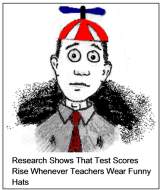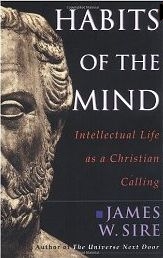object style="height: 390px; width: 640px">
 In this provocative article, the authors passionately “right the ship of state,” which in their opinion as sailed adrift. On the heels of Friedman’s popular work, The World is Flat, these attempt to apply the lessons therein to the field of education.In its quest for standardization and testing, under No Child Left Behind (NCLB), the education establishment has focused on reading scores, math tests and closing the "achievement gap" between social classes. Instead, this article contends that an entire generation will fail in the global economy because they can't think their way through abstract problems, work in teams, distinguish good information from bad, or speak a language other than English. It was noted that a New Commission on the Skills of the American Workforce met to design a blueprint for preparing students to thrive in the global economy. That bi-partisan report espouses that today's economy demands not only a high-level competence in the traditional academic disciplines but also what might be called 21st century skills. Here's what they are: Knowing more about the world. Mike Eskew, CEO of UPS, advocates being "global trade literate, sensitive to foreign cultures, conversant in different languages." Thinking outside the box. Jobs in the new economy--the ones that won't get outsourced or automated-put an enormous premium on creative and innovative skills. As such, students must learn to think across disciplines, since that's where most new breakthroughs are made. Becoming smarter about new sources of information. In an age of overflowing information and proliferating media, students need to rapidly process what's coming at them and distinguish between what's reliable and what isn't. Developing good people skills. EQ, or emotional intelligence, is as important as IQ for success in today's workplace. "Most innovations today involve large teams of people," says former Lockheed Martin CEO Norman Augustine. "We have to emphasize communication skills, the ability to work in teams and with people from different cultures." The authors argue what many analysts believe. That is, to achieve the right balance between core knowledge and what educators call "portable skills"--critical thinking, making connections between ideas and knowing how to keep on learning--the U.S. curriculum needs to become more like Singapore’s, Belgium’s and Sweden’s, whose students outperform American students on math and science tests. Classes in these countries dwell on key concepts that are taught in depth and in careful sequence, as opposed to a succession of forgettable details so often served in U.S. classrooms. Textbooks and tests support this approach. America's bloated textbooks, by contrast, tend to gallop through a mind-numbing stream of topics and subtopics in an attempt to address a vast range of state standards. Depth over breadth and the ability to leap across disciplines are exactly what teachers should aim. These authors contend that teachers will, feel increasing pressure to bring their methods--along with the curriculum--into line with the way the modern world works. That means putting a greater emphasis on teaching kids to collaborate and solve problems in small groups and apply what they've learned in the real world. Besides, research shows that kids learn better that way than with the old chalk-and-talk approach. Published one time for exclusively educational purposes. Resource for the compendium provided by How to Bring Our School Out of the 20th Century, provided by Time Magazine (New York: New York, Dec 6th, 2006), pp. 51-56.  A story is told of the comedic teacher who challenged his colleagues to adopt the latest innovation in education. During his conference period, while in the teacher’s lounge, he claimed that some Ivy League schools in the Northeast discovered that student’s IQ grew exponentially when teachers wore funny hats. A couple of the trend-setting teachers decided to try it with their problem classes. Low and behold, they seemed well-behaved. Through word of mouth a few more teachers bought in to the new system. Reports of improved test scores resounded throughout the building. Teachers wore pointed hats, hats with shocking colors, and hats with plumes sticking out the side. They tested which hat received the best results. Next, the principal shared their success story with other principals. Entire districts adopted the new system. Colleges began to embrace it and produce “How To” manuals. After two years, it became evident that this was not all what it was cracked up to be. So, one-by-one, schools abandoned the “funny hat” method. Such lunacy, although somewhat exaggerative, is all too reflective of the way school reform actually occurs. Too often changes are made in schools based on spurious research, transitory test-scores, the “publish or perish” pressure upon college professors, or multiplied millions of dollars to be made by creating a popular teaching method. Meanwhile, children are subjected to these countless buffooneries. Myron Lieberman, in his profound work, Public Education: An Autopsy, rightly posthumated, “Like individuals, social institutions die, and their death forces us to face an uncertain future… we cannot always wait until rigor mortis sets in to consider what should be done to meet the new situation.” The present climate is a complex combination of the pungent odor of a rotting corpse, along with techno-reforms. One of the maladies of education is the infernal cycling of fads that leave seasoned veterans with a bitter taste toward research, rendering quality school improvement nearly impossible. The latest and greatest method, which promises utopian results in learning, often results in little more than a placebo effect. After a few of these iterations, jaundiced-eyed faculty view the expert who touts the latest be-all-end-all method, little more than snake-oil salesmen. This, in turn, provokes administrators, pressured by the high-stakes test environment, to view faculty as entrenched, unwilling to change, and "old school." In turn, they heap up research on how to change corporate culture in order to break the log-jam of resistance. They mobilize, organize, and implement the latest research to move the school forward. Just like the original research that was not fully implemented, change may or may not happen. When it fails, faculty remain passive-aggressive. Thus, administrators begin to ask themselves, "What is wrong with us?" Then they too begin a list of scapegoats to slaughter. Now, because of the plethora of pop-research in the field, meta-research has become a field of its one. However, the crumbling foundations of shoddy research renders the superstructure of this discipline to be a mere house of cards in many cases. These "fidgets," supposedly verified by research, often end in disappoint after countless hours, energy, and precious funds have been spent. Or, the results are so minimal that schools are forced to defend the amount of resources allocated to the project. Next, educators begin guilt-ridden reflection. "Why doesn't this work in our district?" they ask. "What is wrong with us?" Next, a parade of scapegoats are considered. It didn't work in our school because of our low SES students, lack of quality teachers, unsupportive parents, or incompetent administrators. On and on the victims list goes. However, such self-flagulations to assuage false guilt is both unproductive and unnecessary. At the heart of the malady is faulty research. We are too ready to believe whatever marches under the banner of research. Too ready to swallow whatever pill is handed to us, if the person has Ph.D. after their name, or works at some prestigious research facilities or university. The pressure to publish at the university or research level is intense. Professors must publish to be considered for tenure, or lose their position. Researchers must concoct results in order to get that large federal grant. Keynote speakers must find, understand, and taut research for the next gig. Otherwise, opportunities will dry up. Administrators must grab on to the latest method that has worked elsewhere, to justify to the board, they are pro-actively addressing problems. As such, there is a systemic culture, which fuels ongoing quick, shoddy research practices in the field of education. As such, the educational field is rife with published jirations pretending to be research. Educators have lost the value of criticizing research and researchers. Beyond this, they have lazily accepted the word of research salesmen, who interpret and cite research to validate whatever they're selling. Recently I was given an article citing various sources of "research" from an organization that touts effective instruction to the LD child. Low and behold, the article claimed the research was clear that students behave better by individualized behavior plans, affirming tone, and positive rewards. Although the research and article may or may not be true, I would have been much more impressed with the research if it had come from the Americans to Restore Corporal Punishment. Better yet, if the research showed the LD child can be taught with the same modalities as any other child. It is far too convenient to be selective in what one deems "research," to confirm ones own prejudices and biases. The critical question of the classroom practitioner, as well as the administrator should be, "Is it quality research? Were the results in fact valid and reliable? Is there a direct correlation between those results and my students?" While working in carpentry, one will quickly learn the value of, "measure twice, cut once." What this means in the current discussion is, if we will not genuflect to everything claiming to be research. If we will no longer purchase the products of pop-research. If we insist that only the soundest of research be published and marketed. If we will embarass and humiliate those who try to pass on shoddy research as though it were facts. We will begin to restore the confidence of those war-weary faculty and staff, who have tired of running on a pinwheel.  Habits of the Mind: Intellectual Life as a Christian Calling builds upon a line of publications, decrying the ascent of mindless Christianity that according to the author, James W. Sire, diminishes the effectiveness of the gospel to contemporary cultures. The difference between Sire’s work from those of Noll’s The Scandal of the Evangelical Mind or Guiness’ Fit Bodies, Fat Minds is that the author focuses on the value and development of the intellectual life, rather than chastising the church. It is not intended as a polemic to change the prejudices of mainstream evangelicals or relativists. Instead, it is designed to provide content, definition, and substance to the Christian intellect. Specifically, he leads the Christian through a rare-used labyrinth of concepts intended to help them think with more accuracy, more attention to implications for life, more experience, and awareness of the presence of God. The question arises, “Why should Christian educators concern themselves with the lofty theme of intellectualism?” After all, Christian school teachers are focused on basic skills, to prepare students for higher learning. Whether acknowledged or not, Christian educators are in the career of developing the intellect. As such, it is endemic to the profession to understand what the intellectual life entails. The author acknowledges that intellectuals have been the objects of scorn and deemed irrelevant in evangelical circles. The contrived conflict of the spiritual and the intellect has had an iron grip in many quarters. As such, many of the brightest minds have gone into disciplines other than Christian service where their gifts could be acknowledged and rewarded. There remains a widely held belief that intellectuals erode and undermine a student’s faith. As such, intellectual pursuits continue to be in disdain among the church community. Sire, himself, reflected on the social ostracism and struggles he faced while attempting to follow the Lord’s calling to serve as an intellectual. He notes the tendency to equate this calling with snobbery, arrogance, and even radicalism. However, Sire does a good job of exposing misinterpretations of I Cor. 1:20-25; 8:1-2, and Col. 2:8 by anti-intellectualists. Here he accentuates the point that those verses are not wholesale repudiations of scholarship and philosophy, but of false ideas. In a later chapter, he details Jesus’ use of scholarship, reason, and various forms of logic when explaining truths. Jesus displays an unusual understanding of Scripture from his youth. Sire claims that Jesus uses a fortiori arguments. He reasons from evidence. He constructs arguments. Also, he exegetes the Old Testament to explain the kingdom (p.188-195). Contrary to evangelical instincts, the author begins this journey with a 19th century Anglican-Dissenter who fell into Catholicism and eventually became a cardinal in the Roman church by the name of John Henry Newman. In Newman’s classic work, The Idea of the University, he details characteristics of the fully developed Christian mind. In it, he said the mind is “clear, calm, accurate vision and comprehension of all things, as far as the finite mind can embrace them, each in its place, and with its own characteristics upon it (p.30).” Although Newman’s theology took twists and turns, his intellectual acumen was recognized by both Protestants and Catholics alike. He saw that, “Truth is too sacred and religious a thing to be sacrificed to … the prejudices of education… (p37).” How then is truth acquired? Newman’s answer was the arts and sciences. How about religious truth? He held it was through both reason and revelation. Contrary to historic Protestantism, revelation was derived through the Scripture, Christian tradition, and conscience. Newman argues that the fully developed intellect is disciplined. This intellect, “has learned to leaven the dense mass of facts and events with the elastic force of reason, such an intellect… cannot but be patient, collected and majestically calm, because it discerns the end in every beginning, the origin in every end, and the law in every interruption, the limit in each delay; because it ever knows where it stands, and how its path lies from one point to another (p. 54).” These, among many other such quotes, provide a framework by which Sire can expand Newton’s analysis. He points out that intellectuals are dedicated to clarifying ideas, developing them, criticizing them. Intellectuals see ideas that are “ill-conceived, poorly formulated, twisted out of shape by bile or bias, they bring it into focus, straighten it, examine its implications and determine how true or accurate it is in doing what it claims to do (pp. 77-78).” Also, scholars bring ideas into contact with their counterparts in other systems of thought. He notes, “True intellectuals have a clear view of the panorama of worldviews this allows them a breadth of perspective and enables them to see every idea in a larger context of new twenty-first-century alternatives (p.85).” Since Christians believe all that exists is contingent upon the self-existent Creator. The knower and things known stand in the same dependent relation to the absolute truth which is in God alone. As such, no higher panorama can be attained, making Christian scholars uniquely poised to apply ideas to these variant worldviews. For the Christian, intellectual pursuits are far more than the development of ideas. The value of any idea is in direct proportion to its grasp of truth. Not contrived truth, formulated by traditions or consciences of fallen men, but what Francis Schaeffer called, “true truth.” That is, truth as reality in form, substance, and interpretation as revealed by God’s written and natural law. Like his progenitor, who was driven by a passion for both truth and holiness, Sire turns his pen to define what makes the Christian intellectual distinctive. According to him, a Christian intellectual is everything as other intellectuals, “but to the glory of God (p. 88).” For Sire, the Christian intellectual embraces four categories of virtue. They are not enamored with vacuous ideas, cleverly constructed phrases, or titillating novelties. The Christian scholar has a passion for truth, holiness, consistency, and others. Their passion for truth leads them to being inquisitive, teachable, persistent, and humble. Their pursuit of holiness drives them to do what they know, with love, courage, and integrity. Their compulsion for consistency leads them to tenacity, perseverance, and patience. Finally, their compassion for others, moves them toward clarity of expression, orderliness in presentation, and aptness of illustration. So the question becomes, “How does one pursue the calling of being an intellectual?” Dr. Sire then underscores the disciplines that accompany this calling. He notes this life is characterized by solitariness. These attend to a single problem for lengthy periods of time. They develop the ability to think outside of norms and predictable linear thought patterns. Overarching this is a spirit of prayer that graces the process throughout. The author accentuates that the intellectual life is characterized by reading. As a Christian intellectual, he underscores the lectio divina, or sacred reading. This is not so much a technique as an atmosphere while reading, which lends itself to deep contemplation. He culminates this work by detailing the responsibilities of a Christian intellectual. First, we are responsible to God to use or mental abilities to his glory. We are obliged to devote our minds to the truth as revealed in God’s written and natural law. Finally, we owe obedience to God for what we know. We live in the truth. As a Christian educator, do you cultivate richness in your own intellectual capacity? Do you focus your instruction with students on the development of their ability to think in clear, consistent, and God-honoring fashions? Published one time for exclusively educational purposes. Resource for the compendium provided by The Habits of the Mind: Intellectual Life as a Christian Calling by James W. Sire (2000, Intervarsity Press) |
Categories
All
ArchivesAuthorTEA News at http://www.tea.state.tx.us/index4.aspx?id=2147500008 |
 RSS Feed
RSS Feed
